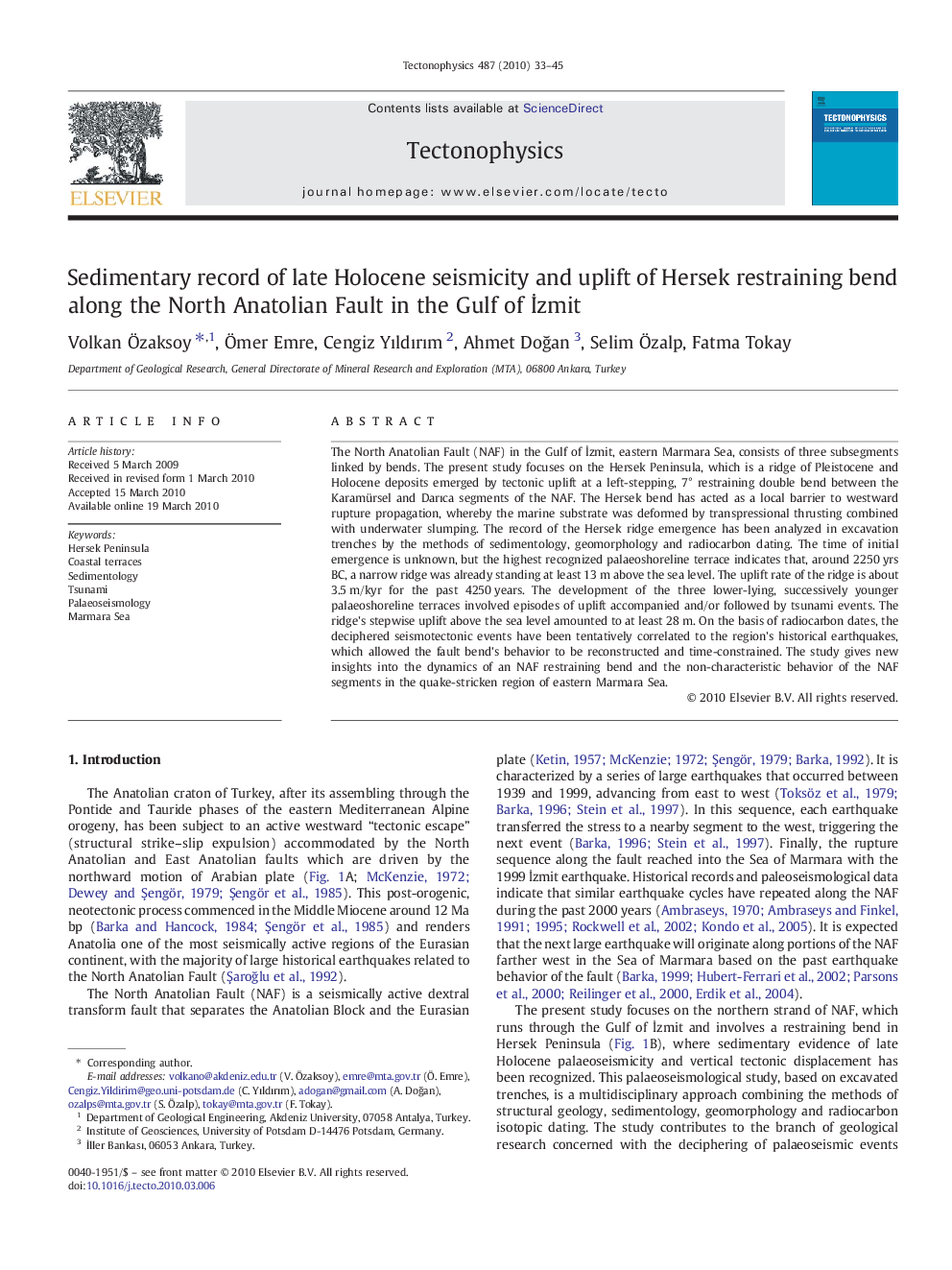| Article ID | Journal | Published Year | Pages | File Type |
|---|---|---|---|---|
| 4693579 | Tectonophysics | 2010 | 13 Pages |
Abstract
The North Anatolian Fault (NAF) in the Gulf of Ä°zmit, eastern Marmara Sea, consists of three subsegments linked by bends. The present study focuses on the Hersek Peninsula, which is a ridge of Pleistocene and Holocene deposits emerged by tectonic uplift at a left-stepping, 7° restraining double bend between the Karamürsel and Darıca segments of the NAF. The Hersek bend has acted as a local barrier to westward rupture propagation, whereby the marine substrate was deformed by transpressional thrusting combined with underwater slumping. The record of the Hersek ridge emergence has been analyzed in excavation trenches by the methods of sedimentology, geomorphology and radiocarbon dating. The time of initial emergence is unknown, but the highest recognized palaeoshoreline terrace indicates that, around 2250 yrs BC, a narrow ridge was already standing at least 13 m above the sea level. The uplift rate of the ridge is about 3.5 m/kyr for the past 4250 years. The development of the three lower-lying, successively younger palaeoshoreline terraces involved episodes of uplift accompanied and/or followed by tsunami events. The ridge's stepwise uplift above the sea level amounted to at least 28 m. On the basis of radiocarbon dates, the deciphered seismotectonic events have been tentatively correlated to the region's historical earthquakes, which allowed the fault bend's behavior to be reconstructed and time-constrained. The study gives new insights into the dynamics of an NAF restraining bend and the non-characteristic behavior of the NAF segments in the quake-stricken region of eastern Marmara Sea.
Related Topics
Physical Sciences and Engineering
Earth and Planetary Sciences
Earth-Surface Processes
Authors
Volkan Ãzaksoy, Ãmer Emre, Cengiz Yıldırım, Ahmet DoÄan, Selim Ãzalp, Fatma Tokay,
